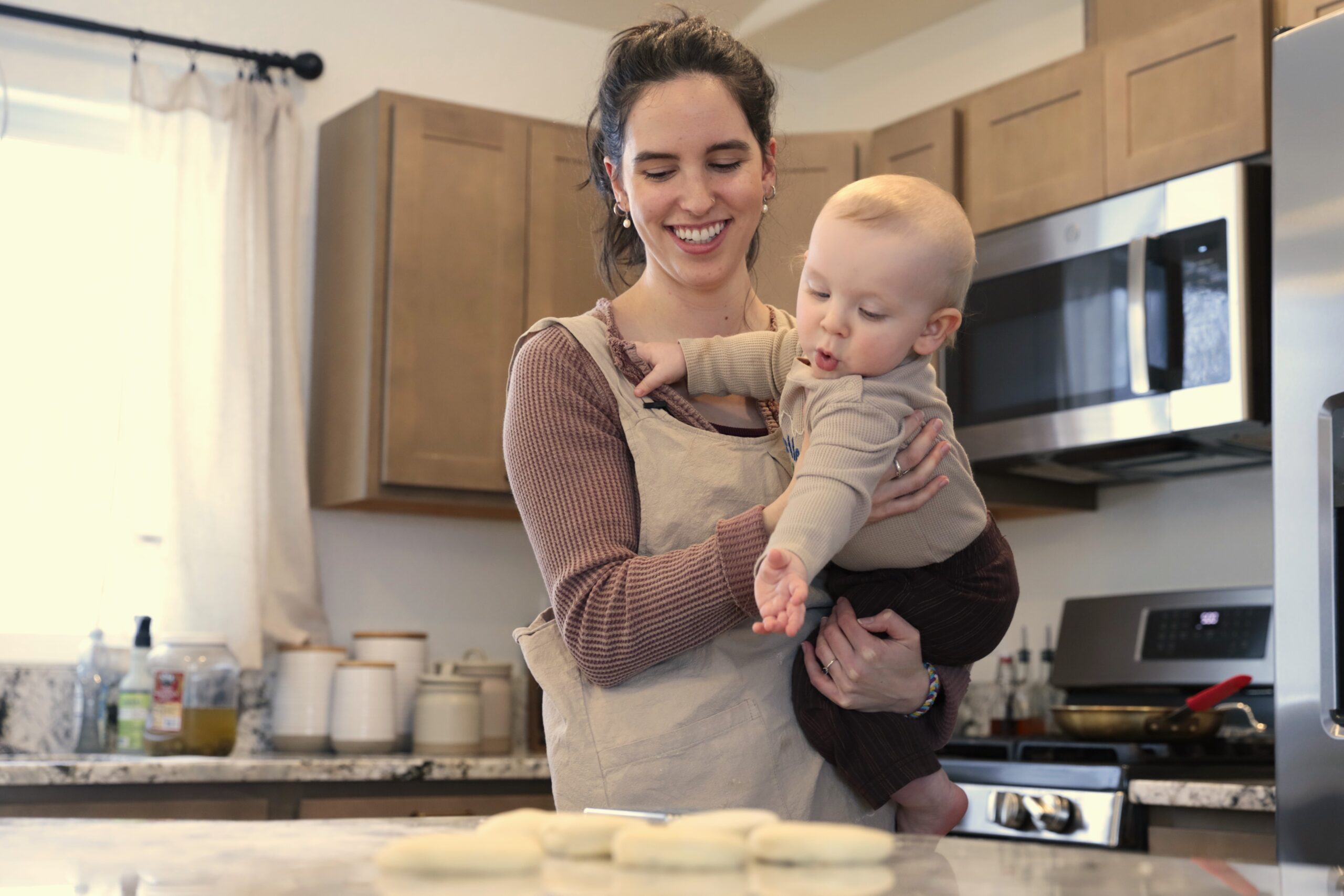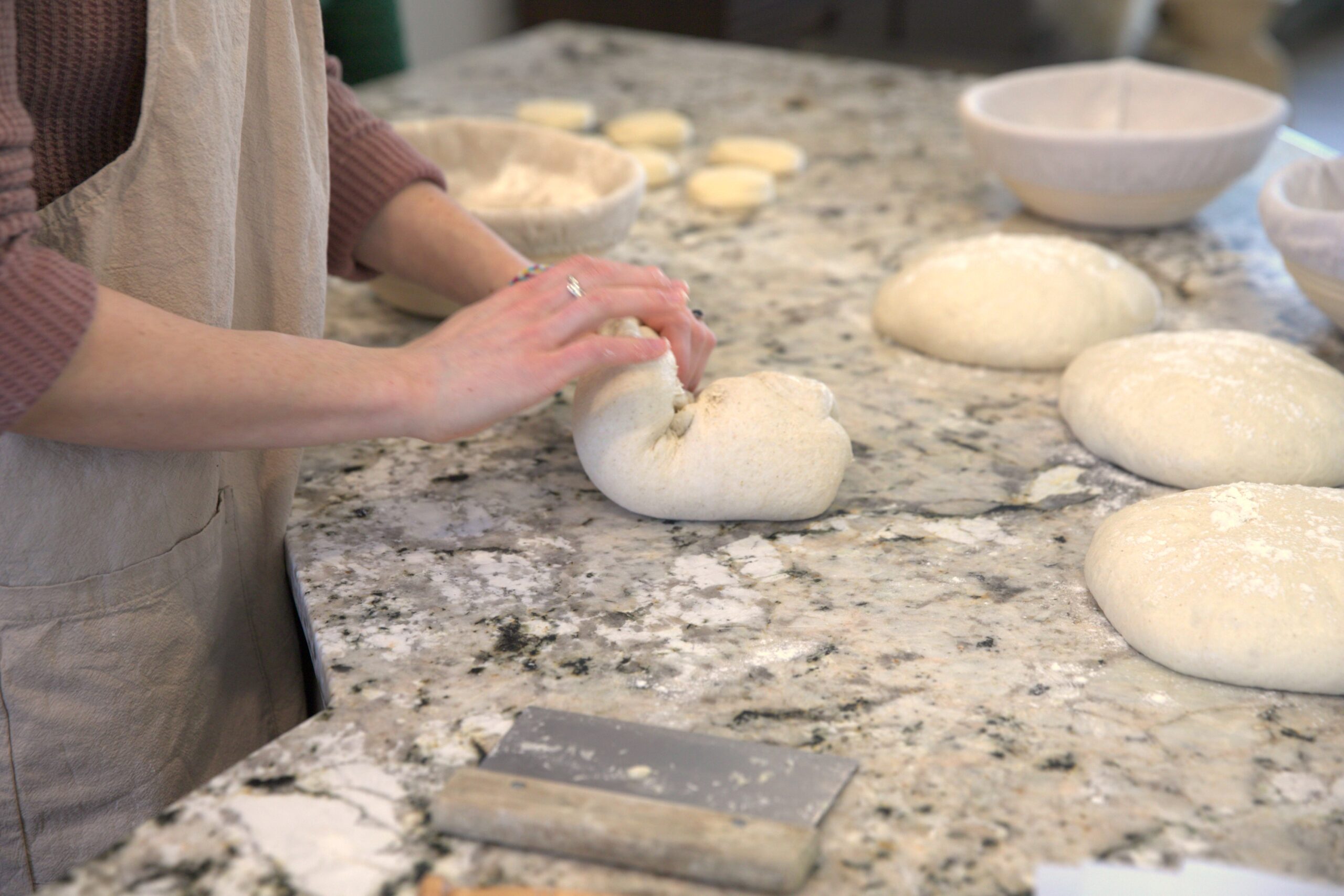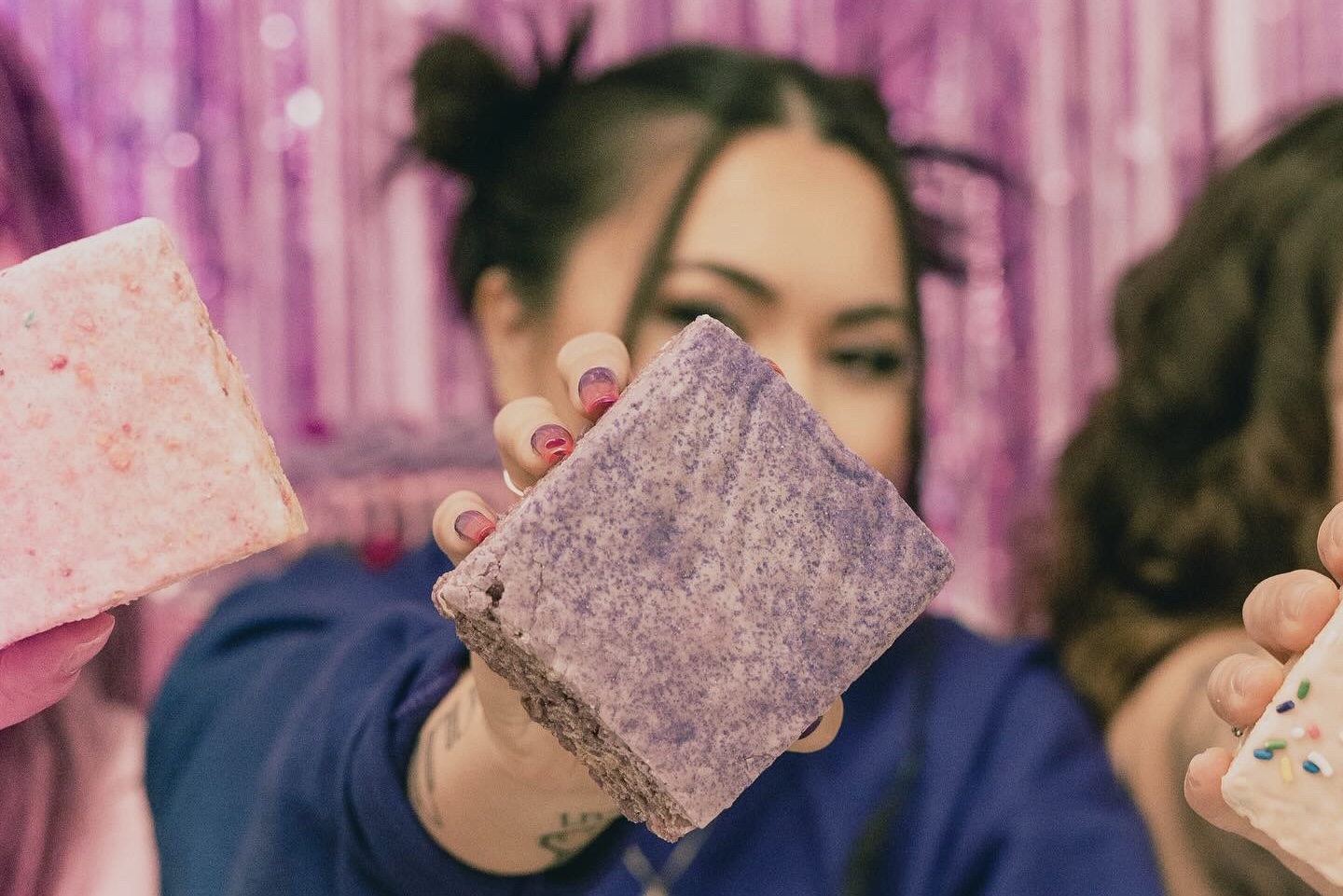
It’s not even 10 a.m. on a Friday morning, but Delaney Peters’ kitchen countertop is covered in flour and six large balls of sourdough dough. She’s baking four golden brown English muffins on a skillet, and some chocolate chip cookies, too.
You wouldn’t know it driving by, but Peters runs a micro-bakery out of her home in Wasilla called Delaney’s Sourdough. She started baking as a hobby a couple years ago, but everything changed when she brought a few loaves to a friend’s party last year.
“She invited me to her house for a little event. She was like, ‘You should bring some bread,’” she said. “So I brought five loaves expecting to just come home with those five loaves, but then I ended up selling them to her friends.”

Peters started posting extra loaves for sale on her Facebook page and she said her business took off from there. She thinks her bread is selling well because of what’s in it — or more accurately, what isn’t.
She only uses three ingredients for her basic dough: water, organic flour and salt.
Peter’s customers can pre-order their goods through her website for pickup twice a week. A regular loaf of sourdough goes for $12. Her menu changes weekly and often incorporates special flavors like jalapeño cheddar or rosemary garlic.
She said her minimal ingredients sets her bread apart from what’s available at the grocery store.
“There’s something special about artisan bread. I think people are getting like pre-sliced bread that’s really dry in the store. So that’s part of it,” she said. “I think that people just have to taste it and taste the difference.”
Peters operates under a decade-old state law that allows bakers to sell food from their own kitchen. Goods are sold directly to the customer, and include things like breads, cookies or even salsa. The law caps their annual income at $25,000. Because she started late last year, Peters isn’t near that limit, but she expects to reach it by the end of the summer.
Many bakers find their customer base on social media, especially Instagram. You can buy anything from Bavarian pretzels to macaroons.
Daniella May tracks this trend closely and has watched as the number of small local baking operations grew substantially over the last few years. May now has nearly 7,000 followers on an Instagram account dedicated to Alaska’s eateries. She said cottage bakers typically make things you can’t find anywhere else.
“I’ve seen with at-home bakers, that a lot of them really put a lot of innovation into their product. And they really take customer feedback into account, which I think is really cool,” she said.
May said the home-baked goods can be expensive. But she’s comfortable paying a few extra dollars because she knows she’s supporting someone’s livelihood. She said she doesn’t worry about quality when ordering from cottage businesses.
“I know that the person is here supporting their life, (their) livelihood essentially,” she said. “The quality is obviously superior to going to a grocery store. That’s why I’m comfortable with it.”
One of May’s favorite cottage bakers is Caroline Saito, who’s dubbed herself as the “ube queen.” Saito owns SweetCaro. She makes various desserts like rice krispies and cookies infused with traditional Filipino flavors.

She said her most popular flavors are pandan and ube, but her most unique flavor is mais queso, better known as cheese and corn ice cream.
“I just make what I want to see because I’ve lived up here for my whole life, I didn’t see a lot of the flavors that I’m used to seeing,” she said.
She began working as a baker on the North Slope when she finished culinary school. She said she’d post photos of what she’d baked on Instagram.
“My friends were like, ‘I’ll buy that from you like please make it here.’ I’d come home for two weeks so I guess it made sense to just do (pop-ups) from my house.”
Saito only bakes when she has pop-up events every few weeks. Depending on the event, she said she can make over a thousand dollars during one. Her goal is to open a storefront, but she isn’t sure if it’d be in Alaska. In the meantime, she said she plans to continue doing pop-up events and markets over the summer.
Ava White reports on economics and hosts the statewide morning news at Alaska Public Media. Reach her at awhite@alaskapublic.org or 907-550-8445. Read more about Ava here.





